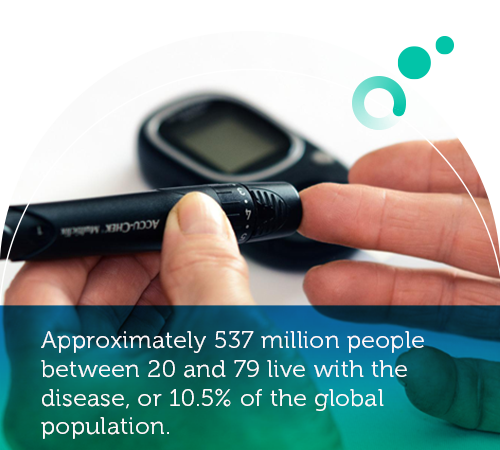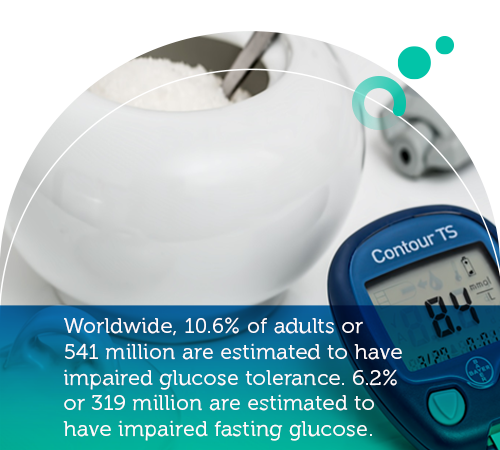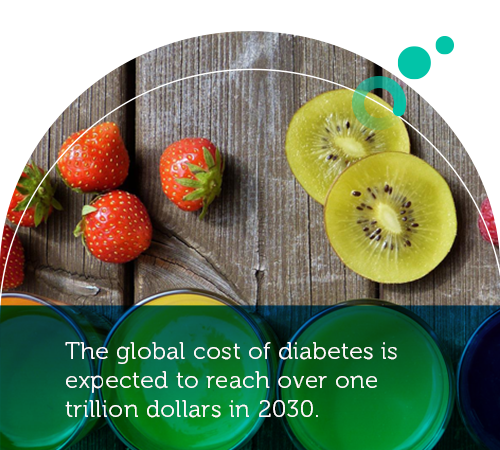
Health Screenings to Schedule in the New Year
As the new year approaches, why wait for symptoms to appear before taking action? Which screenings can transform not only your personal well-being but also the vitality of your workplace?

Diabetes is a severe health problem with epidemic proportions that affects more than half a billion people globally. In fact, the latest diabetes statistics show how alarming the situation is today.
To better understand diabetes, one must first understand insulin’s role in the body. Insulin regulates the glucose levels in the bloodstream, and it transports the sugar into the cells.
Diabetes occurs when the pancreas doesn’t produce enough insulin or the body’s cells don’t use it effectively. When there’s a lack of insulin, the blood sugar stays in the bloodstream, causing an increase in blood glucose.
The prevalence rates of this health condition are rapidly growing around the world. Currently, they are estimated at 10.5%. And the International Diabetes Federation predicts that this rate will continue to rise over time.
According to the current diabetes statistics, more than 500 million people have diabetes, and older people are the most affected. However, these rates are also growing among the youngest due to poor nutrition and lifestyle. The diabetes stats show that men and women are affected, with slightly more men having the disease.

The International Diabetes Federation has investigated each continent separately. Focusing the comparative analysis on North America and Europe, here’s the prevalence rate of diabetes for the two regions:
Prediabetes occurs when the blood sugar level is higher than normal but not high enough to be considered diabetes. It can be divided into impaired glucose tolerance (IGT) or impaired fasting glucose (IFG).
Excess weight and age are important risk factors for prediabetes progressing to type 2 diabetes. However, it is reversible with healthy lifestyle changes.

Type 1 diabetes is when the pancreas produces very little or no insulin at all. Therefore, every person that has type 1 must take additional insulin. Usually, it develops at a young age. However, it can happen at any age, as the type 1 diabetes statistics below show us.
The causes for this type are unknown.
According to CDC, it is believed to be an autoimmune reaction where the body attacks the cells that produce insulin. Even though it is irreversible, there are ways to manage it, such as walking, dieting, and taking diabetes medicines.
Type 2 diabetes is when the body’s cells don’t respond to insulin appropriately.
As a result, the pancreas produces more and more insulin, consequently increasing blood sugar levels. Type 2 can develop over many years. Physical inactivity, excess weight, and genes are the most common causes. This type can be managed with lifestyle changes. What is more, by maintaining blood glucose control, it can even be reversed.
Gestational diabetes is when a woman develops high blood glucose levels, or hyperglycemia, during pregnancy. It can affect women that didn’t have the condition before their prenatal period. Typically, it appears during the second or third trimester. Generally, it is detected by doing a glucose tolerance test. In most cases, it disappears after giving birth.
However, it puts women at a higher risk of developing type 2 diabetes. It is manageable by leading a healthy life in terms of diet and exercise.

The diabetes statistics above show that people of all ages are at risk of developing this condition. Hence, the number of companies that offer diabetes programs to their employees is constantly growing. Diabetes prevention is possible if the appropriate measures are taken.
Managing diabetes in the workplace is a challenge. So, if the company provides its employees with corporate diabetes programs that offer easier access to care and management, that can be a game-changer.
These programs often provide counseling with health professionals, diet plans, exercise schedules, and proper medication usage.
In addition, they may offer digital tools, which include mobile or computer apps that can help employees monitor and manage their blood sugar levels.
Some diabetes programs might also provide glucose testing supplies that employees can refill, so they always have what is needed to check their glucose levels.
Finally, some programs include artificial intelligence platforms which analyze genetics, gut bacteria, or lifestyle habits to create personalized programs including fitness, nutrition, or sleep management to reduce the risk of diabetes.
Browse our curated list of vendors to find the best solution for your needs.
Subscribe to our newsletter for the latest trends, expert tips, and workplace insights!

As the new year approaches, why wait for symptoms to appear before taking action? Which screenings can transform not only your personal well-being but also the vitality of your workplace?

Affecting billions, work-related musculoskeletal disorders are a major health concern. Understanding how and why they happen is the first line of defense in the workplace.

Uncover the latest insights into child care in the US with our 40+ essential statistics, providing a detailed look at the state of child care services, accessibility, and family dynamics.

What does Doctor on Demand cost people with and without insurance coverage, and is it better than in-person appointments?
Used by most of the top employee benefits consultants in the US, Shortlister is where you can find, research and select HR and benefits vendors for your clients.
Shortlister helps you reach your ideal prospects. Claim your free account to control your message and receive employer, consultant and health plan leads.